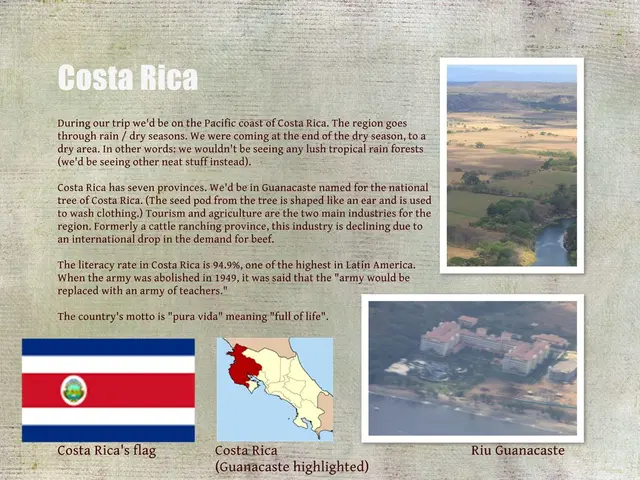Exploring Photosynthesis Education within a Vibrant Corn Labyrinth
In an innovative approach to education, a new corn maze is being designed to help students understand the intricacies of photosynthesis. This educational corn maze will be more than just a labyrinth; it will be an immersive learning experience that combines interactive stations, visual signs, and hands-on experiments.
The maze's design process begins with planning the layout, dividing it into different zones related to photosynthesis, such as light, water, carbon dioxide, and oxygen. Each zone will have a unique focus and learning objectives, ensuring a comprehensive understanding of the process. Navigation will be easy, with clear pathways and signs indicating the different zones.
Interactive stations are a key feature of this educational corn maze. For instance, the Light Energy Station will allow students to measure how light affects plant growth using grow lights or sunlight. They can compare plant growth under different light conditions, providing a hands-on learning experience. Similarly, the Water and Nutrient Station will demonstrate how plants absorb water and nutrients through roots, while the Carbon Dioxide Station will show how CO2 affects plant growth.
Visual signs and educational materials will be placed throughout the maze. Information boards will provide concise explanations of photosynthesis concepts, while visual aids like diagrams and illustrations will show the process, highlighting key steps like light absorption, electron transport, and ATP synthesis. Interactive displays, such as QR codes or digital displays, will provide videos or animations explaining photosynthesis processes.
Hands-on experiments will also form a significant part of the maze. For example, a Photosynthesis Simulation will demonstrate how plants convert light energy into chemical energy, allowing students to manipulate variables like light intensity or CO2 levels to observe effects on photosynthesis. Another experiment, measuring the rate of plant respiration under different conditions, will help students understand the interplay between photosynthesis and respiration.
Engagement and feedback are crucial elements of the maze design. Quiz stations will test students' understanding of photosynthesis concepts, while feedback forms will gather their thoughts on the maze's effectiveness. A debriefing session at the end of the maze will discuss key takeaways and address any questions.
Technology can enhance the photosynthesis lesson through interactive simulations and augmented reality apps. Meanwhile, weather conditions must be considered, with plans in place for potential changes. Accessibility is also essential, with wide, smooth paths, tactile or auditory guides, adjustable-height signage, portable ramps, and clear signage ensuring all students can participate.
Safety precautions are paramount, with a thorough hazard assessment, clear communication protocols, regular emergency drills, and designated emergency communication systems in place. Emergency response planning involves identifying hazards, implementing supervision strategies, and regularly checking the environment.
By engaging students in real-time photosynthesis experiments, the process becomes tangible, dispelling common myths. Strategically placed signs or interactive stations will explain the role of features in optimising photosynthesis, ensuring plants remain healthy and pest-free.
Extending learning beyond the maze experience helps students see the relevance of photosynthesis in everyday life and global issues. When planning the maze layout, sustainable farming practices like crop rotation and pest management can be incorporated as landmarks or informational stations.
In conclusion, the educational corn maze offers a unique and engaging way to teach students about photosynthesis. By incorporating interactive stations, visual signs, and hands-on experiments, students can gain a deeper understanding of this essential process.
- This innovative approach to education doesn't limit learning to the classroom; it extends to the workplace-wellness sector, promoting health-and-wellness through fitness-and-exercise routines and environmental-science projects.
- Climate-change educators can design a similar maze to teach students about carbon sequestration and the greenhouse effect, fostering a sense of environmental responsibility and personal-growth.
- To cater to a diverse student body, the maze can incorporate skills-training for job-search and career-development, focusing on areas like science research, NASA-inspired space-and-astronomy projects, and education-and-self-development workshops.
- Mental-health is an essential aspect of holistic well-being, and the maze can include a mindfulness station equipped with CBD-infused skincare products, promoting relaxation and stress-reduction techniques.
- Nutrition plays a crucial role in overall health, and the maze can incorporate a food-science zone, where students can learn about the value of a balanced diet, the importance of Medicare benefits for older adults, and the role of good nutrition in environmental sustainability.
- To ensure the maze's long-term success, city officials and schools can sponsor the project, treating it as a vital component of their community's learning and therapeutic resources.
- By nurturing a love for learning and collaboration, the maze can foster a new generation of innovative thinkers who are equipped to tackle global challenges with creativity and resilience.
- The maze's design process can serve as a case study for other institutions looking to create immersive, hands-on learning experiences in various subjects, from traditional STEM disciplines to emerging fields like artificial intelligence and data analytics.
- With the right combination of engagement, technology, and accessibility, the educational corn maze can spark a passion for learning and foster a lifelong commitment to environmental stewardship, personal growth, and career development.




